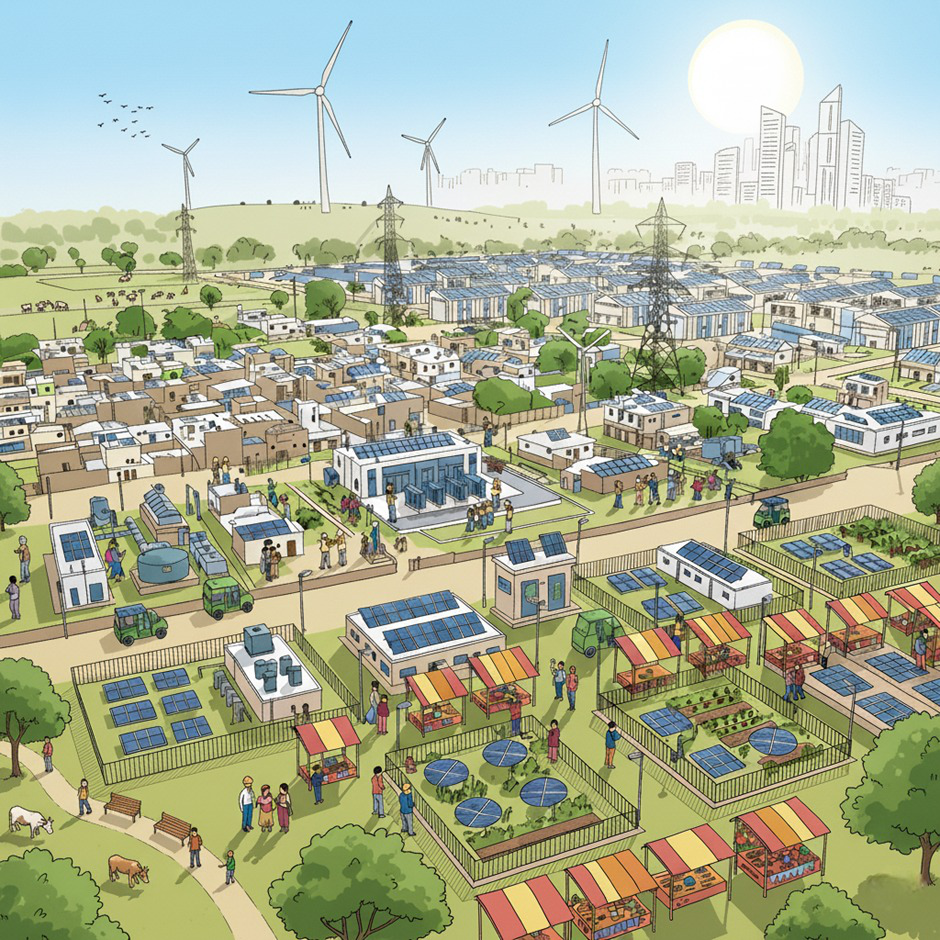India has already built 123 GW of solar capacity; a shining example of how far efforts have come in just over a decade. By 2030, the country aims to reach 530 GW of renewable capacity, with solar playing the starring role. Power Purchase Agreements (PPAs), solar parks, and large-scale private investments are turning this vision into reality.
India, with its population of over 1.4 billion, is one of the world's largest and fastest growing energy consumers. Today, the nation requires almost 5 TWh of power every single day. To put this into perspective, that is enough energy to charge 500 million electric cars daily or to keep every streetlight on Earth running for an entire month. This staggering scale makes India's present-day consumption nearly 900 times larger than it was at the time of independence.
Historically, much of this demand has been met using fossil fuels—coal, oil, and natural gas. From the 1950s to the 1990s, electrification was aimed at administrative, industrial, and financial hubs considered vital to the economy. However, with more than 60% of India comprising rural areas, regional gaps persisted for decades. Only recently has the milestone of 100% electrification been reached, but it comes at a high financial and environmental cost.
Electricity today is no longer a luxury—it stands alongside food, water, and shelter as a basic necessity. Meeting this growing demand sustainably requires moving away from resources that will eventually run out and embracing alternatives that can power the country for centuries to come.
The Case for Solar Energy
India is naturally positioned to lead in solar power. With nearly 300 sunny days every year across most regions, solar is not just abundant but reliable. According to a study by the Council on Energy, Environment and Water (CEEW), almost 78% of Indian households together have the potential to generate 637 GW of solar electricity—several times greater than the country's current total installed capacity.
The National Solar Mission of 2010 laid the groundwork, and in recent years initiatives like the PM Surya Ghar Yojana have accelerated adoption. As of today, more than 10 million households have installed solar rooftop systems, and state governments are actively developing solar parks to balance growing demand.
That said, adoption has not yet reached its full potential. Some of the key barriers include:
- High upfront investments and financing difficulties
- Lack of clarity on long-term savings and return on investment
- Concerns around maintenance and panel durability
- Limited local awareness of available subsidies and schemes
Why Switching to Solar Matters
For households and businesses alike, solar power brings both economic and environmental benefits:
- Lower electricity costs: Savings of 40–80% are possible over the system's lifetime.
- Subsidies and financing: Government programs have made adoption more affordable than ever.
- Energy independence: Solar reduces reliance on the grid, offering stability during outages.
- Environmental impact: Every kilowatt-hour generated from solar cuts nearly 0.9 kg of CO₂ emissions.
Solar is not only about greener energy—it is also about building resilience, reducing costs, and achieving self-sufficiency for the long term.
Steps to Begin Your Solar Journey
If you are considering making the switch, here are some practical steps:
- Assess your rooftop – Examine your home or business to see how much open, sunlit space you have.
- Understand your electricity needs – Use your past power bills to determine the system size you require.
- Look into subsidy programs – Schemes like PM Surya Ghar Yojana can reduce upfront costs significantly.
- Select the right partner – Choose installers who are government-certified and provide warranties and service.
- Plan long term – Solar systems typically last over 20 years, giving you not just savings but also reliable energy independence.
The Road Ahead
India has already built 123 GW of solar capacity; a shining example of how far efforts have come in just over a decade. By 2030, the country aims to reach 530 GW of renewable capacity, with solar playing the starring role. Power Purchase Agreements (PPAs), solar parks, and large-scale private investments are turning this vision into reality.
This journey is not a race with other countries but a marathon of sustainability that India is uniquely poised to lead. For households that once struggled with rising energy costs, solar brings independence, opportunity, and hope. By adopting solar, every home can not only save on bills but also contribute to powering an energy-secure India.
This journey is not a race with other countries but a marathon of sustainability that India is uniquely poised to lead. For households that once struggled with rising energy costs, solar brings independence, opportunity, and hope.
